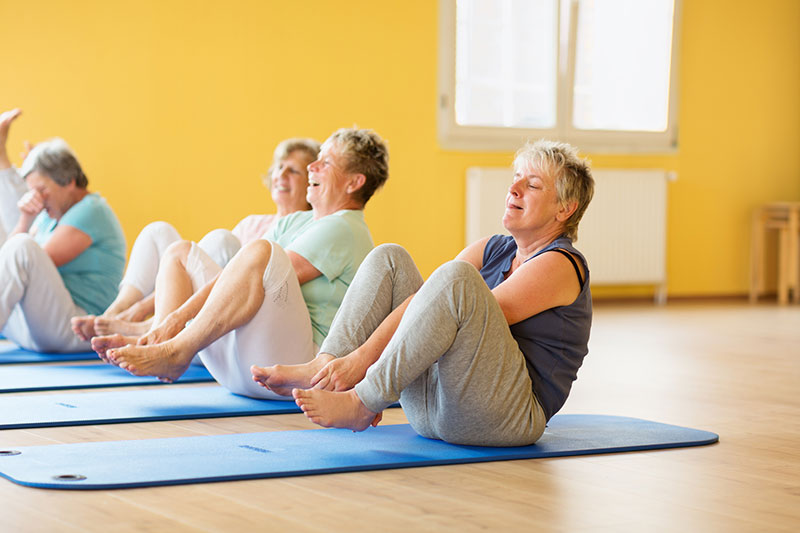Meditation and Yoga Can Help You Age Well

The ancient healing arts of meditation and yoga have been around for millennia. Yoga began in India as a group of physical, mental and spiritual practices. Meditation also has its roots in spirituality, as it was practiced by many eastern religions. Today, yoga and meditation have gone “mainstream” as both are used as a practical way to achieve better health and well-being. Books such as 10% Happier, gyms offering yoga as part of their fitness offerings and employers such as Apple, Google and Nike offering meditation in the workplace have brought a practical, achievement-based approach to these ancient disciplines.
Scientific research has confirmed much of the anecdotal evidence that yoga and meditation enthusiasts have been raving about for decades. A study at UCLA discovered that a three-month course of yoga and meditation helped minimize the cognitive issues that often precede Alzheimer’s disease and other forms of dementia – in fact, it was more effective than the memory enhancement exercises in improving visual-spatial memory skills and decreasing depression and anxiety. Another study from Beth Israel Deaconess Medical Center in Boston showed that a group of people aged 55-90 who meditated and practiced yoga showed less brain shrinkage, particularly in the hippocampus, than a control group.
Meditation has positive effects on the brain
Sara Lazar, a neuroscientist and Massachusetts General Hospital and Harvard Medical School conducted two studies to discover what, if any, effect meditation had on the brain. What she discovered is that meditation created physical changes in the brain; specifically, the hippocampus – responsible for learning, memory – grew larger.
According to Alzheimers.net, meditation can also:
- Increase protective tissues in the brain
- Decrease feelings of isolation and loneliness
- Reduce stress, including the hormone cortisol, which has been shown to increase the risk of developing dementia
Learning to become still
So how does one meditate and how can one incorporate into our busy, hectic lives? The first act of meditation is simply to become still. This can be challenging as we are taught to multitask and get things done. Slowing down may seem to go against everything we’ve been taught about how to get ahead in the world.
One of the easiest ways to become still is to focus on your breathing. Become conscious of each inhale and exhale. Start to breathe in more deeply. Expand your belly on each inhale. Get to the point where the length of the inhale and exhale are approximately the same. As your breathing becomes balanced, your mind becomes balanced. By focusing on your breath, you’ll discover then mind shuts off, giving it – and your entire body – a chance to rejuvenate.
Yoga helps increase overall well-being
Both yoga and meditation have been shown to reduce stress, which is the underlying cause of many diseases. According to Harvard Health, regular yoga practice appears to increase overall well-being as well, including better sleep, better body awareness, weight loss, and greater happiness. Yoga also appears to improve mindfulness, helping to boost compassion and gratitude, which contribute to greater happiness.
Yoga, in addition to a meditative practice, is also a great form of exercise and several studies have shown that it may help improve heart health. Investigators from the Netherlands and the United States found that yoga may provide the same benefits in reducing heart disease risk factors – such as high blood pressure and LDL cholesterol – as such traditional physical activities as biking or brisk walking.
People living with mobility challenges
One of the advantages of both yoga and meditation is that they can be practiced by people living with mobility challenges. Yoga can be adapted for those confined to a wheelchair or living with arthritis and meditation can be practiced by virtually everyone.
![LifeCare Advocates [logo]](https://www.lcadvocates.com/wp-content/uploads/sites/270/2017/11/logo.png)